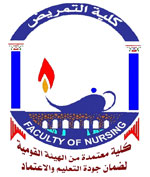Most females exhibit some degree of pain and discomfort during menstrual period, which can impact on their daily activities, and disturb their productivity at home or at their workplace. In our country many girls may lack appropriate and sufficient information regarding dysmenorrhea and menstrual hygiene, causing incorrect unhealthy behavior during their menstrual periods. This study was done for the adolescent girls to assess the prevalence & pattern of dysmenorrhea and to examine the menstrual hygiene practices among students in some Elminia nursing schools. This study conducted in some nursing school at EL-Minia governorate (Mallawy, and Abu- korkas) nursing schools. These schools were selected for data collection between the periods from Feb. 2009 to May 2009. The sample comprised 160 eligible female students according to the following criteria 14: 19 years of age, single female and free from medical & gynecological problems. The study applied a descriptive cross sectional design in which two tools were used for data collection. A special structured questionnaire was designed to assess sociodemographic characteristics, information about menstrual characteristics and practices related to menstrual hygiene and verbal multidimensional scoring system for assessment of dysmenorrhea was used to assess the severity of pain. This study was carried out in two phases; preparatory phase and the implementation phase. The present study reported a high prevalence rate of dysmenorrhea (94.4%) was categorized as (49.0%) for 1st degree of pain, (34.4%) for second-degree and (16.6%) for third-degree. Measures taken to relieve dysmenorrhea were found to be: intake of certain types of domestic hot drinks (43.0%), taking analgesics (22.5%), and (66.2%) Perform physical activities during menstrual period. All students (100.0%) took complete hot baths during menstruation. About one-fourth (26.9 %) of students just took rest and staying at home, who believed that physical activities will increase the menstrual pain and increase feeling of exhaustion. On conclusion the high prevalence of dysmenorrhea was observed and the useful measures mentioned and encouraged are: exercise practiced by (66.2%) of students and the entire students (100%) take hot bath during menstruation (76.8%) from them practiced hot bath as a management for dysmenorrhea, however the necessity to adopt a healthy behavior, which includes: appropriate nutrition and appropriate use of medications based on a physician's prescription was a very important issue.
قسم البحث
مجلة البحث
Journal of American Science
المشارك في البحث
الناشر
NULL
تصنيف البحث
2
عدد البحث
7(x)
موقع البحث
NULL
سنة البحث
2011
صفحات البحث
NULL
ملخص البحث

